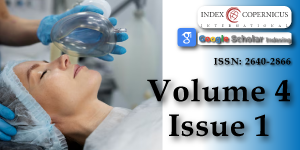A comparison of complications associated with nutrition between the patients receiving enteral or parenteral in the intensive care unit
Main Article Content
Abstract
The aim of this study was to investigate and compare the complications including infection and mortality associated with enteral and parenteral nutrition on patients in the ICU of a university hospital.
In this study, a total of 100 patients who were under follow-up in the ICU for two years were examined. In our study, demographic characteristics, the reason for admission, comorbidity, initial ICU laboratory values, morbidity and mortality during the follow-up period of the patients who only received enteral nutrition (EN) or parenteral nutrition (PN) were evaluated, and the results between two were compared as well as evaluating the complications within the groups.
The comparison of the reason for admission between the EN and PN groups showed that surgical reasons were significantly higher in the PN group. Nosocomial infections, the presence of infection and the development of sepsis were significantly higher in the EN group. The 28-day mortality rate was higher in the PN group compared to the EN group. The length of stay in the ICU and on mechanical ventilation was longer in the EN group. There was no significant difference in the 28-day mortality, readmission to the ICU and repeated endotracheal intubation between the two groups.
Because there is no statistical difference between EN and PN groups in point of infection and mortality, we conclude that the length of stay in the ICU and reason for admission play a more crucial role in the development of infection and on mortality rather than enteral or parenteral nutrition route.
Article Details
Copyright (c) 2020 Asci SS, et al.

This work is licensed under a Creative Commons Attribution 4.0 International License.
ASPEN Board of Directors and the Clinical Guidelines Task Force. Guidelines for the use of parenteral and enteral nutrition in adult and pediatric patients. JPEN J Parenter Enteral Nutr. 2002; 26: 1SA-138SA. PubMed: https://pubmed.ncbi.nlm.nih.gov/11841046/
Tamiya H, Yasunaga H, Matusi H, Fushimi K, Akishita M, et al. Comparison of short-term mortality and morbidity between parenteral and enteral nutrition for adults without cancer: a propensity-matched analysisi using a national inpatient database. Am J Clin Nutr. 2015; 102: 1222-1228. PubMed: https://pubmed.ncbi.nlm.nih.gov/26447149/
Eroglu A. The effect of intravenous alanyl-glutamine supplementation on plasma glutathione levels in intensive care unit trauma patients receiving enteral nutrition: the results of a randomized controlled trial. Anesth Analg. 2009; 109: 502-505. PubMed: https://pubmed.ncbi.nlm.nih.gov/19608826/
Moore FA, Feliciano DV, Andrassy RJ, McArdle AH, Booth FV, et al. Early enteral feeding, compared with parenteral reduces postoperative septic complications. Ann. Surg. 1992; 190:172-182. PubMed: https://pubmed.ncbi.nlm.nih.gov/1386982/
Singer P, Blaser AR, Berger MM, Alhazzani W, Calder PC, et al. ESPEN guideline on clinical nutrition in the intensive care unit. Clin Nutr. 2019; 38: 48-79. PubMed: https://pubmed.ncbi.nlm.nih.gov/30348463/
Taylor BE, McClave SA, Martindale RG, Warren MM, Johnson DR, et al. Guidelines for the Provision and Assessment of Nutrition Support Therapy in the Adult Critically Ill Patient: Society of Critical Care Medicine (SCCM) and American Society for Parenteral and Enteral Nutrition (A.S.P.E.N.). Crit Care Med. 2016; 44: 390-438. PubMed: https://pubmed.ncbi.nlm.nih.gov/26771786/
Heidegger CP, Darmon P, Pichard C. Enteral vs. parenteral nutrition for the critically ill patient: a combined support should be preferred. Current Opin Crit Care. 2008; 14: 408-414. PubMed: https://pubmed.ncbi.nlm.nih.gov/18614904/
Heyland DK, Dhaliwal R, Drover JW, Gramlich L, Dodek P. Canadian clinical practice guidelines for nutrition support in mechanically ventilated, critically ill adult patients. J Parenteral Enteral Nutr. 2003. 27: 355-373. PubMed: https://pubmed.ncbi.nlm.nih.gov/12971736/
Zaloga GP. Parenteral nutrition in adult inpatients with functioning gastrointestinal tracts: assessment of outcomes. Lancet. 2006; 367: 1101-1111. PubMed: https://pubmed.ncbi.nlm.nih.gov/16581410/
Liu CL, Du Z, Lou C, Wu C, Yuan Q, et al. Enteral nutrition is superior to total parenteral nutrition for pancreatic cancer patients who underwent pancreaticoduodenectomy. Asia Pacific J Clin Nutr. 2011; 20.2: 154-160. PubMed: https://pubmed.ncbi.nlm.nih.gov/21669582/
Harvey SE, Parrott F, Harrison DA, Bear DE, Segaran E, et al. Trial of the route of early nutritional support in critically ill adults. N Engl J Med. 2014; 371: 1673-1684. https://pubmed.ncbi.nlm.nih.gov/25271389/
Grau T, Bonet A, Rubio M, Mateo D, Farré M, et al. Liver dysfunction associated with artificial nutrition in critically ill patients. Critical Care. 2007; 11: R10. PubMed: https://pubmed.ncbi.nlm.nih.gov/17254321/
Tao Y, Tang C, Feng W, Bao Y, Yu H. Early nasogastric feeding versus parenteral nutrition in severe acute pancreatitis: A retrospective study. Pak J Med Sci. 2016; 32: 1517-1521. PubMed: https://pubmed.ncbi.nlm.nih.gov/28083056/
Reignier J, Boisramé-Helms J, Brisard L, Lascarrou JB, Ait Hssain A, et al. Enteral versus parenteral early nutrition in ventilated adults with shock: a randomised, controlled, multicentre, open-label, parallel-group study (NUTRIREA-2). The Lancet. 2018; 391: 133-143. PubMed: https://pubmed.ncbi.nlm.nih.gov/29128300/
Blaser AR, Starkopf J, Alhazzani W, Berger MM, Casaer MP, Deane AM, Fruhwald S, Hiesmayr M, et al. Early enteral nutrition in critically ill patients: ESICM clinical practice guidelines. Intensive Care Med. 2007; 43: 380-398. PubMed: https://pubmed.ncbi.nlm.nih.gov/28168570/
Yan X, Zhou FX, Lan T, Xu H, Yang XX, et al. Optimal postoperative nutrition support for patients with gastrointestinal malignancy: A systematic review and meta-analysis. Clinical Nutrition. 2017; 36: 710-721. PubMed: https://pubmed.ncbi.nlm.nih.gov/27452745/
Işıl CT, Türk HŞ, Totoz T, Oba S. Reanimasyon ünitemizin bir yıllık nütrisyon profili. Ş.E.E.A.H. Tıp Bülteni. 2013; 47: 147-150.
Cotogni P. Management of parenteral nutrition in critically ill patients. World J Crit Care Med. 2017; 6: 13-20. PubMed: https://pubmed.ncbi.nlm.nih.gov/28224103/
Moore FA, Moore EE, Jones TN, McCroskey BL, Peterson VM. TEN versus TPN following major abdominal trauma-reduced septic morbidity. J Trauma. 1989; 29: 916–923. PubMed: https://pubmed.ncbi.nlm.nih.gov/2501509
Park JS, Chung HK, Hwang HK, Kim JK, Yoon DS. et al. Postoperative nutritional effects of early enteral feeding compared with total parental nutrition in pancreaticoduodectomy patients: a prosepective, randomized study. J Korean Med Sci. 2012; 27: 261-267. PubMed: https://pubmed.ncbi.nlm.nih.gov/22379336/
Metin ZG, Özdemir L. Yoğun Bakımda Enteral Pompa ile Beslenen Hastalarda Gelişen Komplikasyonlar ve Etkileyen Faktörlerin Belirlenmesi. Hacettepe Üniversitesi Hemşirelik Fakültesi Dergisi. 2015; 2: 20–29.

